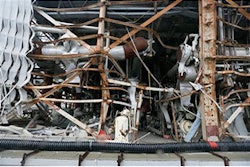WASHINGTON (November 19, 2013) – According to the American Chemistry Council (ACC), the U.S. Chemical Production Regional Index (U.S. CPRI) edged lower by 0.2 percent in October, following a revised 0.3 percent decline in September. The pace of decline has slowed in all regions; and in the Gulf Coast region, production gained during October.
On a three-month moving average (3MMA), output of the nation’s overall manufacturing sector edged higher by 0.4 percent in October, after increasing 0.1 percent in September. Within the manufacturing sector, output in several key chemistry end-use markets grew, including appliances, motor vehicles, construction materials, machinery, fabricated metal products, computers, semiconductors, plastic products, structural panels, textiles, apparel, and furniture. Despite the partial government shut down during the first half of the month, manufacturing production expanded at its fastest pace since February.
Also measured on a 3MMA basis, overall chemical production was again mixed. Gains in the output of fertilizers, organic chemicals, chlor-alkali, and synthetic rubber were offset by lower production of inorganic chemicals, pharmaceuticals, manmade fibers, industrial gases, coatings, acids, consumer products and plastic resins.
Compared to October 2012, total chemical production in all regions decelerated to a 1.5 percent year-over-year gain, following a 1.7 percent gain in September. Chemical production remained ahead in all regions compared to a year ago. Comparing the first ten months of 2013 to that in 2012, chemical production was up 1.2 percent nationally, with five of the seven regions posting gains.
The chemistry industry is one of the largest industries in the United States, a $770 billion enterprise. The manufacturing sector is the largest consumer of chemical products, and 96 percent of manufactured goods are touched by chemistry.
The U.S. CPRI was developed to track chemical production activity in seven regions of the United States. It is comparable to the U.S. industrial production index for chemicals published by the Federal Reserve. The U.S. CPRI is based on information from the Federal Reserve. To smooth month-to-month fluctuations, the U.S. CPRI is measured using a three-month moving average. Thus, the reading in October reflects production activity during August, September, and October.
Following upwardly revised flat growth in September, chemical production in the Gulf Coast region edged higher by 0.4 percent in October. October production, however, was ahead by 1.5 percent from a year ago and up by 2.0 percent on a year-to-date basis. The Gulf Coast region is dominated by the production of key building block materials, such as petrochemicals, inorganics, and synthetic materials, advantaged by shale gas development.
In the Midwest region, which is influenced by production of agricultural chemicals, plastics, paints, and other chemical products, chemical production slipped by 0.1 percent in October, following an upwardly revised 0.4 percent decline in September. Compared to October 2012, Midwest chemical production was up by 1.4 percent, and up 0.8 percent on a year-to-date basis.
In the Ohio Valley region, largely influenced by production of basic chemicals, plastics and synthetic rubber, chemical production slipped by 0.1 percent in October. This followed an upwardly revised 0.4 percent decline in September. Compared to October 2012, production in the region was up by 2.9 percent, and was also up 4.2 percent on a year-to-date basis.
In the Mid-Atlantic region, where pharmaceutical manufacturing is prominent, chemical production was lower by 0.3 percent in October, following a 0.5 percent decline in September. Compared to October 2012, Mid-Atlantic chemical production was up by 1.0 percent, but production was flat on a year-to-date basis.
In the Southeast region, which is influenced heavily by production of basic chemicals, fibers, agricultural and other chemical products, chemical production fell by 0.2 percent in October, following an upwardly revised 0.3 percent decline during September. Compared to October 2012, Southeast region chemical production was up by 2.3 percent year-over-year and was higher by 1.5 percent on a year-to-date basis.
In the Northeast region, which is influenced by pharmaceutical manufacturing and other specialty chemical manufacturing, chemical production slipped by 0.3 percent during October, following an upwardly revised 0.5 percent decline in September. Compared to October 2012, Northeast region chemical production was up by 1.3 percent, and was 0.6 percent higher on a year-to-date basis.
In the West Coast region, chemical production edged lower by 0.3 percent in October, following a 0.5 percent decline in September. Chemical production in the West Coast region was up by 1.3 percent from last year, but remained down on a year-to-date basis by 0.3 percent.






















